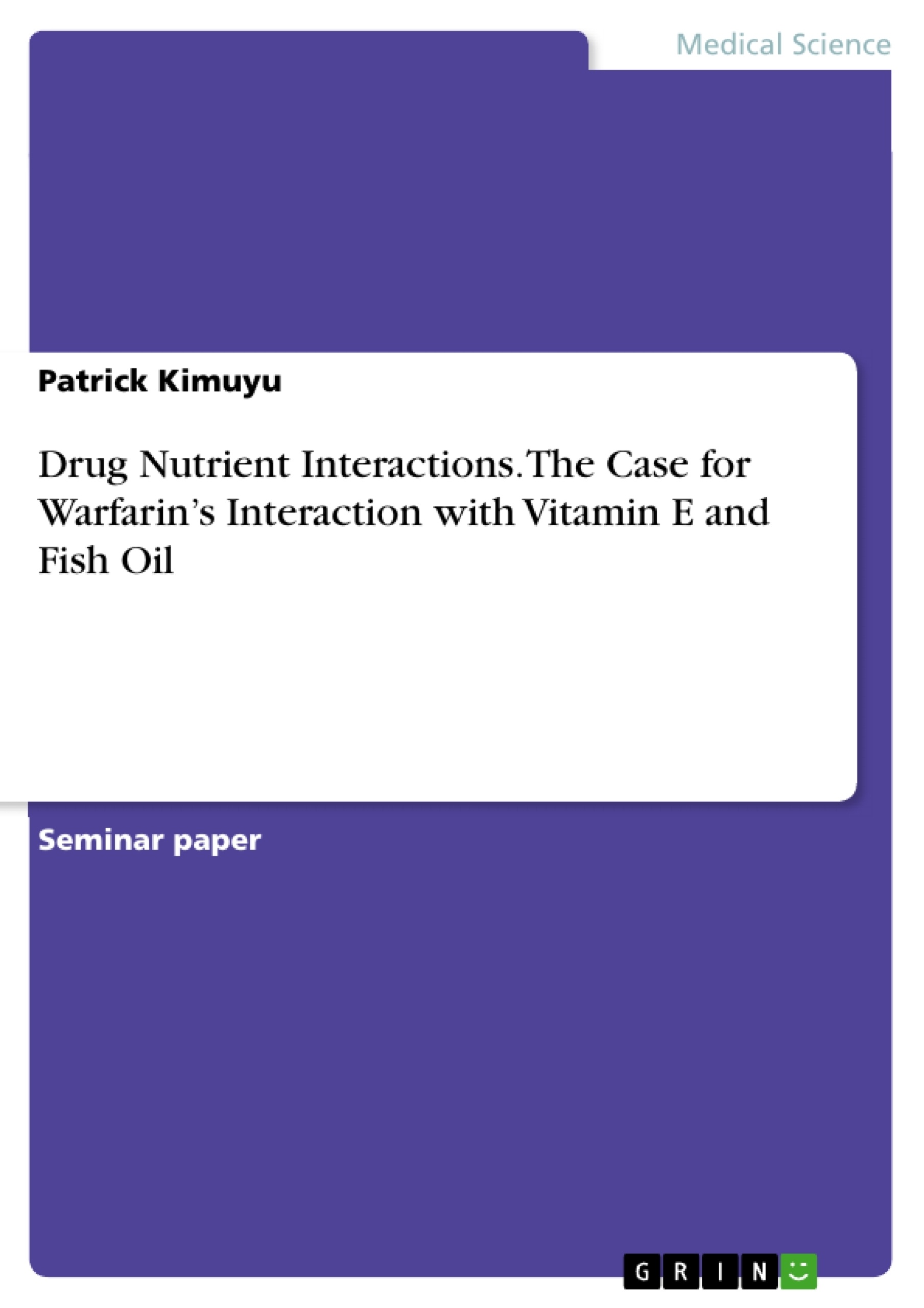This paper will provide a comprehensive assessment of warfarin and its nutritional interactions, primarily vitamin E and fish oil.
In practice, nutritional components are known to influence the efficacy of therapeutic agents. Some nutrients improve the efficacy of some drugs, whereas others reduce their therapeutic potency. As such, it is critical to understand the nutritional interactions between drugs and the nutritional components in the diet. Diets which interfere with the activity of certain drugs should be avoided during the treatment period. This prevents nutritional interactions which may result into adverse reactions. The same precaution applies to nutritional supplements. Over the past few decades, nutritional supplements have flooded the market. However, these supplements raise safety concerns, especially on dosage, efficacy and side effects.
Despite the safety concerns, it is worth noting that some nutritional components such as vitamins and fatty acids have been found to have clinical significance. They are used for the treatment of different health conditions and illnesses, especially when combined with therapeutic agents. For instance, vitamin E and Omega-3 fatty acids have gained immense acceptance in clinical practice. However, their use should be guided by their interactions with drugs. Warfarin, an antithrombotic agent, is one of the drugs which exhibit interactions with vitamin E and fish oil. This drug is used for the prevention and treatment of arterial and venous thrombotic disease since its development. However, dietary interactions have always complicated its safe use.
Inhaltsverzeichnis (Table of Contents)
- Introduction
- Warfarin and Its Therapeutic Mechanisms
- Types of Nutrient Drug Interactions Associated with Warfarin
- Warfarin Interaction with Vitamin E
- Warfarin Interaction with Fish Oil
Zielsetzung und Themenschwerpunkte (Objectives and Key Themes)
This paper provides a comprehensive assessment of warfarin and its nutritional interactions, primarily focusing on vitamin E and fish oil. It aims to understand the mechanisms of warfarin's therapeutic effect and the potential complications arising from interactions with these specific nutrients.
- The therapeutic mechanisms of warfarin, including its pharmacodynamics and pharmacokinetics
- The types of nutrient drug interactions, specifically pharmacodynamics interactions
- The impact of vitamin E and fish oil on warfarin's effectiveness and potential risks
- The similarities and differences in the modes of action of warfarin, vitamin E, and fish oil
- The clinical significance of these interactions in managing cardiovascular disease
Zusammenfassung der Kapitel (Chapter Summaries)
- Introduction: This chapter introduces the concept of nutritional interactions with therapeutic agents, highlighting the importance of understanding these interactions to prevent adverse reactions. It also briefly introduces warfarin and its role in treating thrombotic disease, emphasizing the potential complications arising from dietary interactions.
- Warfarin and Its Therapeutic Mechanisms: This chapter delves into the pharmacodynamics and pharmacokinetics of warfarin, explaining how it exerts its antithrombotic effect. It discusses the drug's absorption, distribution, metabolism, and elimination, as well as its interaction with vitamin K and its influence on blood clotting factors.
- Types of Nutrient Drug Interactions Associated with Warfarin: This chapter defines the two main types of drug interactions: pharmacodynamics and pharmacokinetic interactions. It explains how each type affects the drug's action in the body and provides a framework for understanding the interactions between warfarin and nutrients like vitamin E and fish oil.
Schlüsselwörter (Keywords)
The paper focuses on the interaction between warfarin, an antithrombotic agent, and key nutrients like vitamin E and fish oil. It explores the pharmacodynamics and pharmacokinetics of warfarin, highlighting its mechanisms of action and potential complications arising from dietary interactions. The key themes revolve around the clinical significance of these interactions in managing cardiovascular disease, emphasizing the importance of understanding nutrient-drug relationships for patient safety and optimal therapeutic outcomes.
- Quote paper
- Patrick Kimuyu (Author), 2018, Drug Nutrient Interactions. The Case for Warfarin’s Interaction with Vitamin E and Fish Oil, Munich, GRIN Verlag, https://www.grin.com/document/411954




